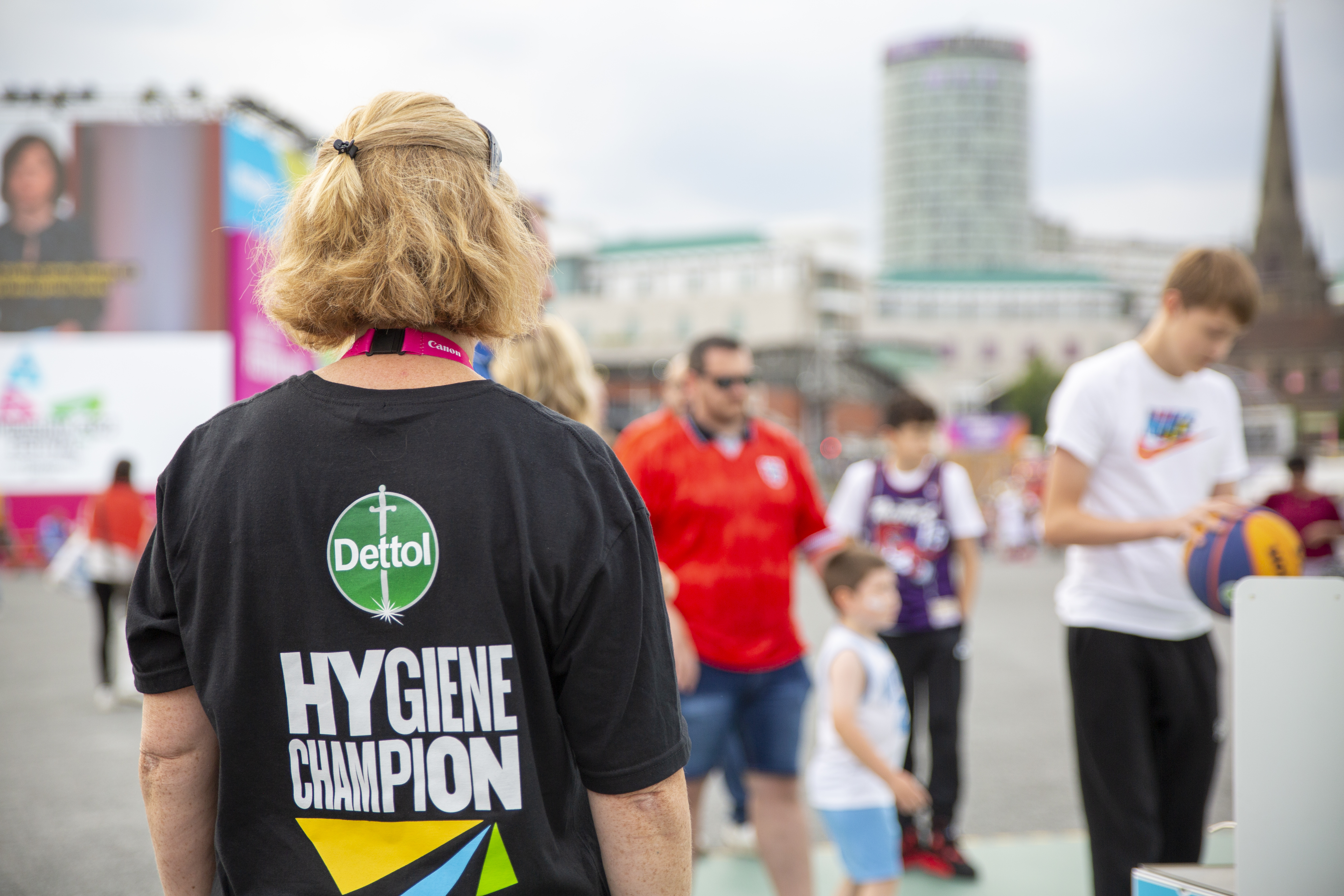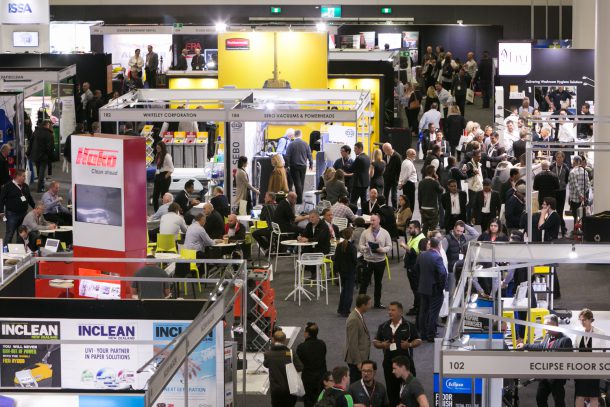
More than two years after Australia’s first border closures and nationwide lockdowns, a greater understanding of hygiene and the role we collectively all play in helping reduce the spread of germs has emerged.
When faced with the behemoth task of protecting over one million visitors, 10,000 athletes, volunteers, and cleaning crew members from germs at the 2022 Commonwealth Games over 12-days and 15 stadiums, we set out to build a bespoke hygiene and cleaning program that would cater to one of the year’s largest sporting events while also encouraging people to ‘do the right thing’.
Thanks to our long history of research and rigour to inform our products at Reckitt, we used a combination of proven methodologies such as motivation, effective ‘nudge theory’ and choice architecture to inform our hygiene protocols (I’ll get to what each of these means imminently).
The importance of these techniques has become more apparent than ever in helping to drive positive hygiene behaviour as complacency creeps in.
One of the most widely used approaches for behavioural change at both individual and societal levels is ‘nudging’. Based on the understanding that behaviour is strongly influenced in largely automatic ways by the context within which it is placed, ‘nudging’ is used to push people in particular directions.[1]
Nudge theory can be effective at influencing the likelihood of someone exhibiting a behaviour – as seen with the fly experiment carried out by Richard Thaler at Amsterdam Schiphol airport.
Thaler and his team discovered that etching a fake fly into the airport urinals improved men’s aim and reduced spillage by 80 per cent when urinating[2].
While I’m relieved to tell you that we refrained from sticking fake flies above urinals at the Commonwealth Games, we did employ similar nudge theory tactics to help protect players, spectators, and employees from the spread of germs.
Here are our top tips that any organisation, or large-scale event, can employ to help influence behaviour change to enhance hygiene compliance.
- Make the behaviours convenient and hard to avoid
Behaviours are much more likely to be practised if they are convenient or require limited effort.
Studies have shown that particular settings can help ‘nudge’ people towards the right behaviour.
Making target behaviours visible, the default or easy option has been demonstrated to be an effective approach to changing a range of public health behaviours and has been used quite widely to promote hand hygiene amongst children[3].
At the Commonwealth Games 2022 we distributed more than 2000 posters to reinforce good hand hygiene habits in the sink area of each restroom, alongside the use of Dettol soap.
However, one can argue that trying to reach people purely at the basin area is a bit late. And so, we took things a step further and targeted people in the cubicles with clear, simple and entertaining messaging.
We placed thousands of stickers, in the shape of hands, with messages such as ‘Winners Wash Their Hands Before They Return To The Stands’ or, ‘Cleanliness is Next To Sportiness, Wash Your Hands’ prompting attendees to wash their hands and placed them on the back of cubicle doors, to encourage good hand hygiene at a critical moment.
- Make the behaviours normal, socially desirable, and rewarding
A key task of any behavioural intervention is to get people’s attention and continue to disrupt the status quo until the ‘new normal’ includes the targeted behaviours.
This is because the majority of behaviour happens automatically and is shaped by what has worked well in the past, something called ‘reinforcement learning’, where a problem is faced and behaviour is learnt through trial-and-error interactions[4].
A Dettol hygiene kit was given out at the Games to provide staff, volunteers, athletes and officials with a face covering and personal hand sanitiser to use when on the move. Hygiene messaging, incorporated on to the box itself, encouraged the use of the items, again making it as easy as possible to drive positive hygiene behaviours.
- Make the behaviours surprising and timely
Protocols at the 2022 Commonwealth Games were centred around timely and ‘Targeted Hygiene’ — the practice of putting into place hygiene surface and hand hygiene interventions when and where they are most needed[5].
More than 2800 sanitising stations were set up at the Games, of which 100 were ‘talking’ hand sanitiser dispensers. This was an innovative way and a surprising element to remind the crowds of the importance of hygiene behaviour.
The dispensers had a voice activation feature that delivered ‘thank you’ messages to people as they sanitised their hands and a counter to show how many times the unit had been used.
This principle emphasises the use of interventions that are also fun and brightly coloured in the attempt to capture one’s attention.
One study at a school in Bangladesh found that changes to the infrastructure, including brightly coloured paint and footpath nudges that led from the toilet to the handwashing facility resulted in a 64 per cent increase in good hygiene behaviour six weeks after installing the nudge[6].
This could be considered hand-in-hand with other appropriate measures, such as encouraging staff and attendees to wash or sanitise their hands at critical times, such as upon arrival at the premises.
The 2022 Commonwealth Games celebrated human achievement, perseverance, and dedication. Reckitt also champions these attributes in its purpose to protect, heal and nurture in the relentless pursuit of a cleaner, healthier world.
Katy Slater is Regulatory Director, New Growth Platforms, Reckitt
This article first appeared in the March/April issue of INCLEAN magazine
Comment below to have your say on this story.
If you have a news story or tip-off, get in touch at info@incleanmag.com.au
Sign up to INCLEAN’s newsletter.
[1] Vlaev, I., King, D., Dolan, P. and Darzi, A., 2016. The theory and practice of “nudging”: changing health behaviours. Public Administration Review, 76(4), pp.550-561.
[2] Oullier, O., Cialdini, R., Thaler, R.H. and Mullainathan, S., 2010. Improving public health prevention with a nudge. Economic Perspectives, 6(2), pp.117-36.
[3] Watson J, Dreibelbis R. Using Environmental Nudges to improve handwashing with soap among school children. COVID-19 Hygiene Hub: WASH in Schools Network; 2020.
[4] Kaelbling, L.P., Littman, M.L. and Moore, A.W., 1996. Reinforcement learning: A survey. Journal of artificial intelligence research, 4, pp.237-285.
[5] The Case for Targeted Hygiene, 2019, Accessed 7 July 2022 at: https://journals.sagepub.com/doi/10.1177/1757913919864070#:~:text=Targeted%20Hygiene%20is%20an%20 approach,in%20Figures%201%20and%202
[6] Watson J, Dreibelbis R. Using Environmental Nudges to improve handwashing with soap among school children. COVID-19 Hygiene Hub: WASH in Schools Network; 2020.




